Affiliate links on Android Authority may earn us a commission. Learn more.
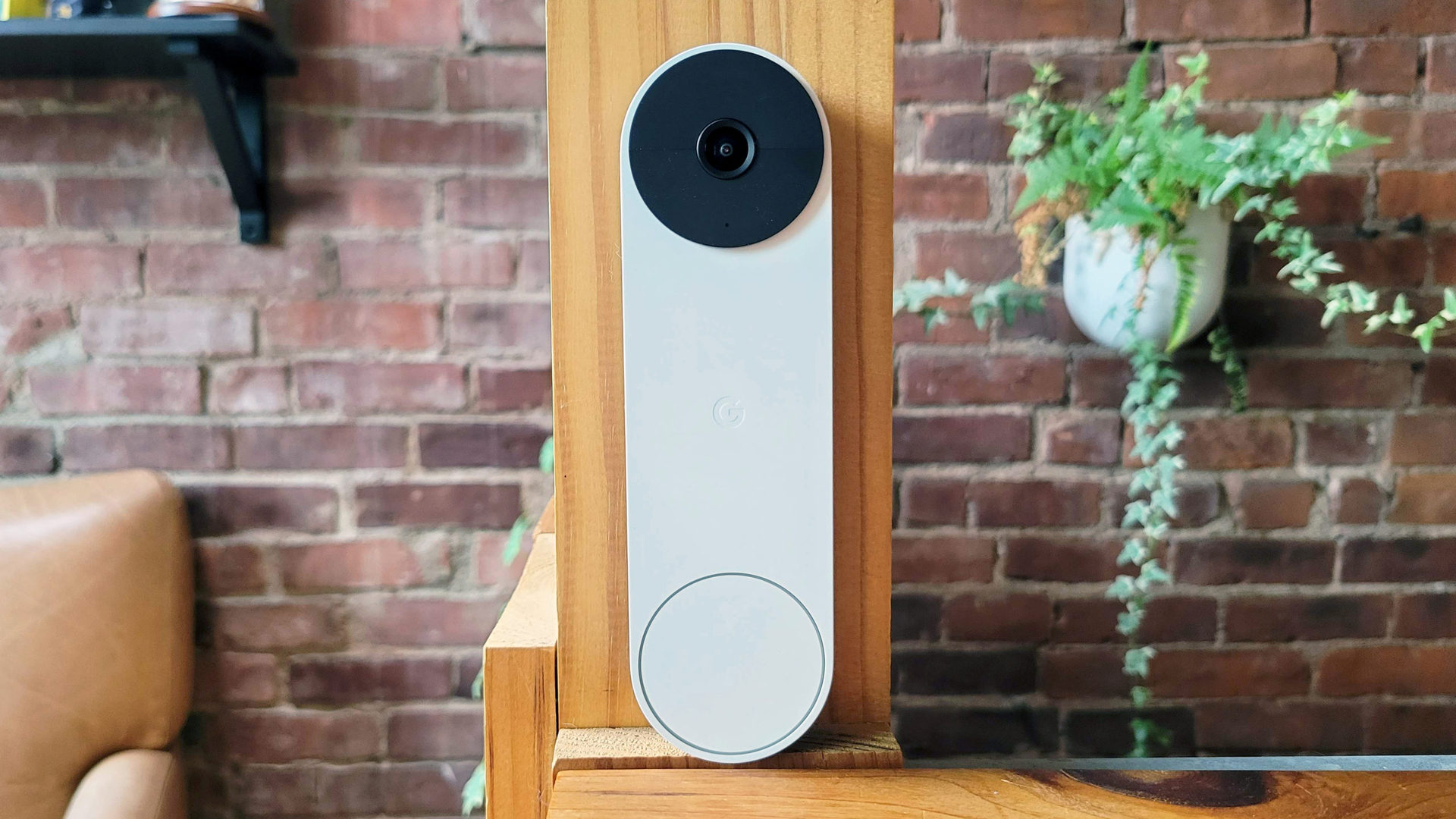

Google Nest Doorbell review: Catching up to the competition
April 3, 2023

Google Nest Doorbell
MSRP:
What we like
What we don't like

Google Nest Doorbell
Google’s first foray into smart doorbells started with the Nest Hello in 2018. Unfortunately that product had a small audience, mainly due to its high price and huge limitation of only working with existing wired doorbell systems. This year, though, the company is finally offering a totally wireless solution with the Google Nest Doorbell.
Without a doubt, the Nest Doorbell is the smart home entry device Google fans have been waiting for. However, this is a product people wanted even before the Nest Hello launched over three years ago. How many of those folks have already jumped ship to one of the many competitors out there that have offered wireless doorbells for years?
Regardless, in this Google Nest Doorbell review, we’re going to tell you what you can expect from this highly-anticipated product.
Update, July 2022: We’ve updated this review by adding an FAQ section that answers the most asked questions about the device, and much more.
Update, April 2023: We’ve noted Google’s later addition of Amazon Alexa support, and the addition of a 2nd gen Wired model.
What you need to know about the Google Nest Doorbell
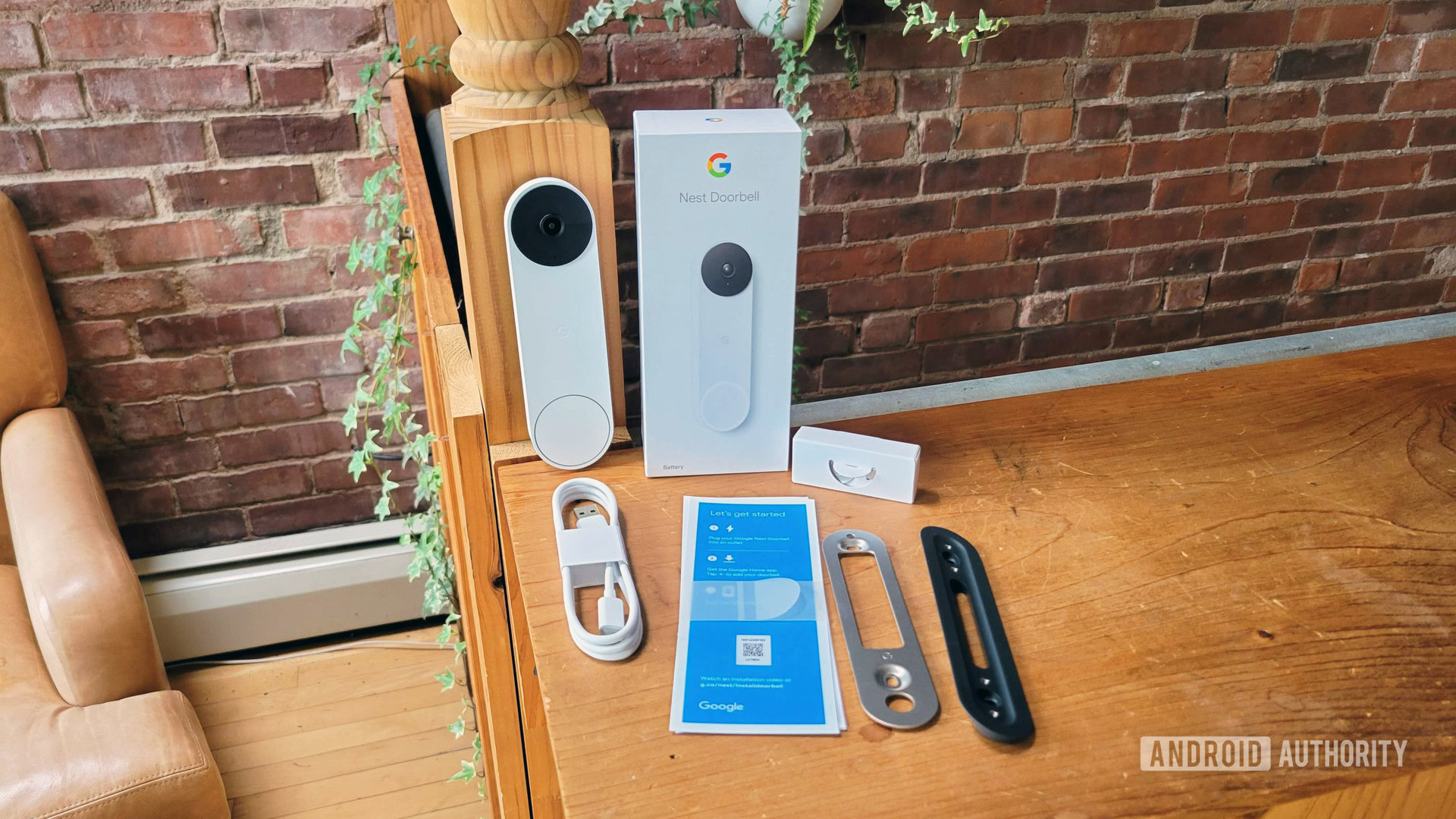
- Google Nest Doorbell (Battery): $179 / £179 / €199
The Google Nest Doorbell is equipped with a vertically-oriented camera that captures 960 x 1,280 video. Although it works wirelessly, you can also wire it to your existing doorbell chime system. This makes the product much more versatile than Nest’s previous wired-only doorbell.
If you have any, chimes can sound on smart speakers running either Google Assistant or Amazon Alexa. When you step up to Assistant- or Alexa-powered smart displays or TVs, the video feed, as well as the chime, can appear on those screens when someone rings. You’ll also of course get notifications on your Android or iOS device.
Out of the box, the doorbell offers 3 free hours of cloud-based event recording. You can expand this with a Nest Aware subscription if you wish — more on that later. It also has onboard AI that can recognize people, packages, animals, and vehicles, cutting down on false alerts from things like tree branches.
Only one Nest Doorbell color is available around the world: Snow (white). That’s the color seen in this review. In the United States, though, there are other color options including Linen (beige), Ivy (grayish-green), and Ash (gray).
Finally, note that Google has rebranded the 2018 Nest Hello as the 1st gen Google Nest Doorbell (Wired). It also lowered that device’s retail price before replacing it with the 2nd gen Wired model. For simplicity’s sake, we’ll refer to the 2021 wireless version as the Nest Doorbell.
What can the Nest Doorbell do?
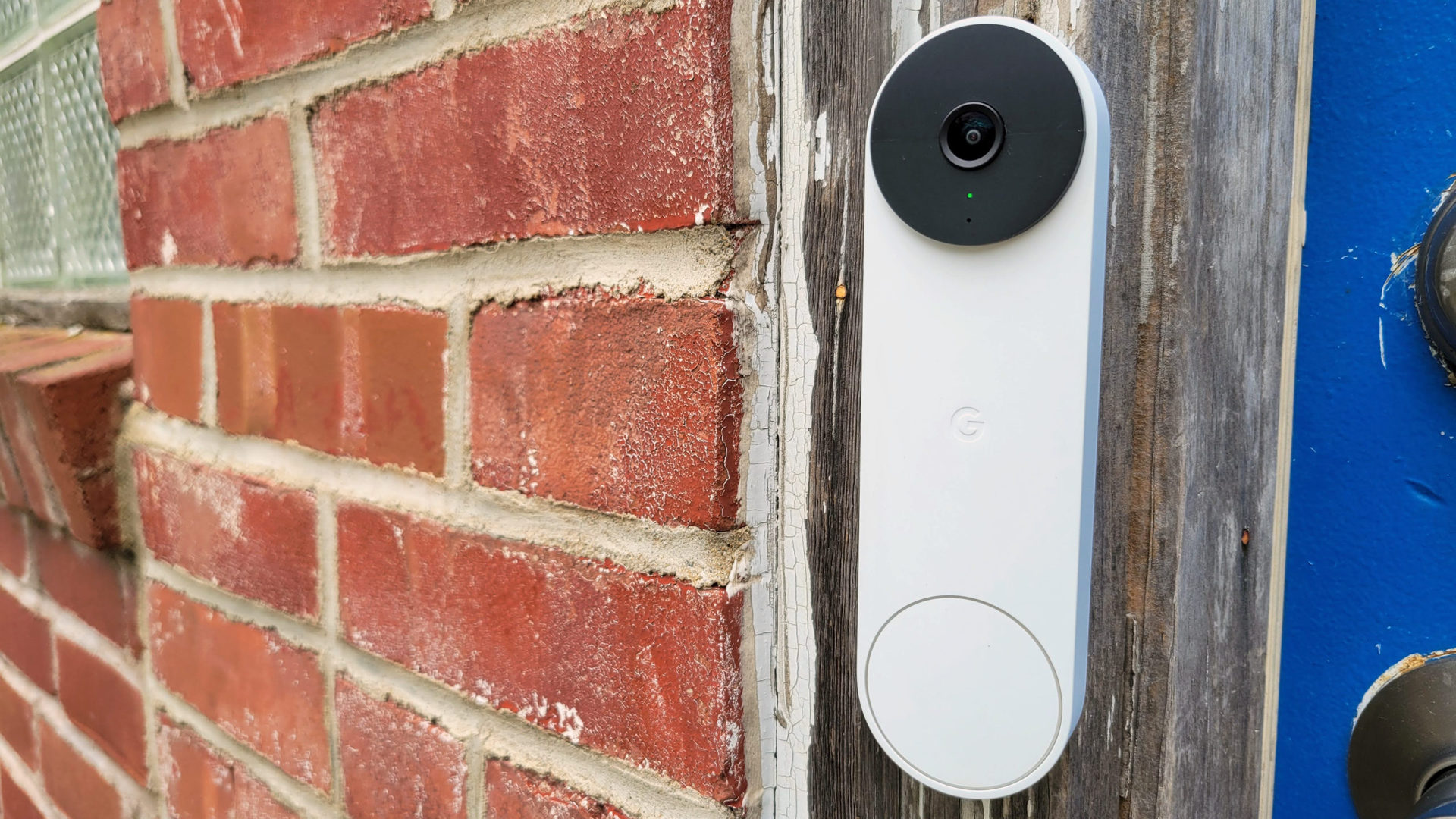
It’s easiest to think of the Nest Doorbell as a small wireless security camera with a doorbell button attached. In that vein, it will do pretty much everything you want from a security camera. It will monitor your front door, alert you when it spots someone, record footage of what happens, and so on.
When someone rings the doorbell, it alerts you on all your Google Assistant-powered devices, including your phone. On your phone and smart displays, you can tap a microphone button to directly communicate (audio only) with that person. If this makes you uncomfortable, there are canned responses you can issue via the Assistant voice.
Audio
The audio quality of these interactions is OK. I could hear people from the doorbell just fine, and the audio coming out of the doorbell sounds about as good as a loud smartphone speaker. There were some slight audio delays here and there, but nothing that impeded conversations. I do wish there were a few more canned responses available, as the three on offer don’t really cover every hypothetical situation. These are your only choices:
- “You can just leave it.”
- “We’ll be right there.”
- “No one can come to the door.”
Options such as “Please come back in 10 minutes” or even a simple “Thank you very much” would be nice additions here. I understand that Google is trying to keep things simple, but there’s definitely room for expansion. The responses could at least be a little more friendly-sounding!
It should be noted though that the camera works flawlessly with Google Assistant and Assistant-powered displays. If you ask your smart display to show you the camera feed, it’s onscreen in a few seconds. If someone rings the bell, the chime is loud and clear, and the video feed appears quickly and automatically.
There’s no extra setup involved with this either. Once you use the Google Home app to configure and operate the device, it all just works. However, you cannot issue Assistant commands to the doorbell itself.
Pixel phone users can also take advantage of functionality that was part of the June 2022 Pixel feature drop. It allows them to see who’s at the front door without unlocking their device, as a preview shows up on the lockscreen. Once you tap on the preview window, the full feed opens up.
Camera
Unlike a lot of competing products, the aspect ratio of the Nest Doorbell’s video feed is 3:4 instead of 16:9 or something similarly horizontal. This taller ratio (seen in the screenshots above) combined with a 145-degree diagonal field-of-view (FoV) allows the camera to see all the way down to the floor, which helps it recognize when packages are left. The downside, of course, is that you don’t get the same panoramas as other cameras.
As for the camera itself, it’s fairly large for products of this type. You can see it compared to a Google Pixel 5 below.
Interestingly, the Nest Doorbell has a lower resolution than the Nest Hello — 960 x 1,280 for the former and 1,200 x 1,600 for the latter. It also has a lower FoV at 145 degrees instead of 160 degrees.
Obviously, lower-resolution video isn’t great. The feed looks fine and I could see all the details I needed to see, but some competing products at this price point offer the 2K resolution of the Hello or, at the very least, a standard 1080p.
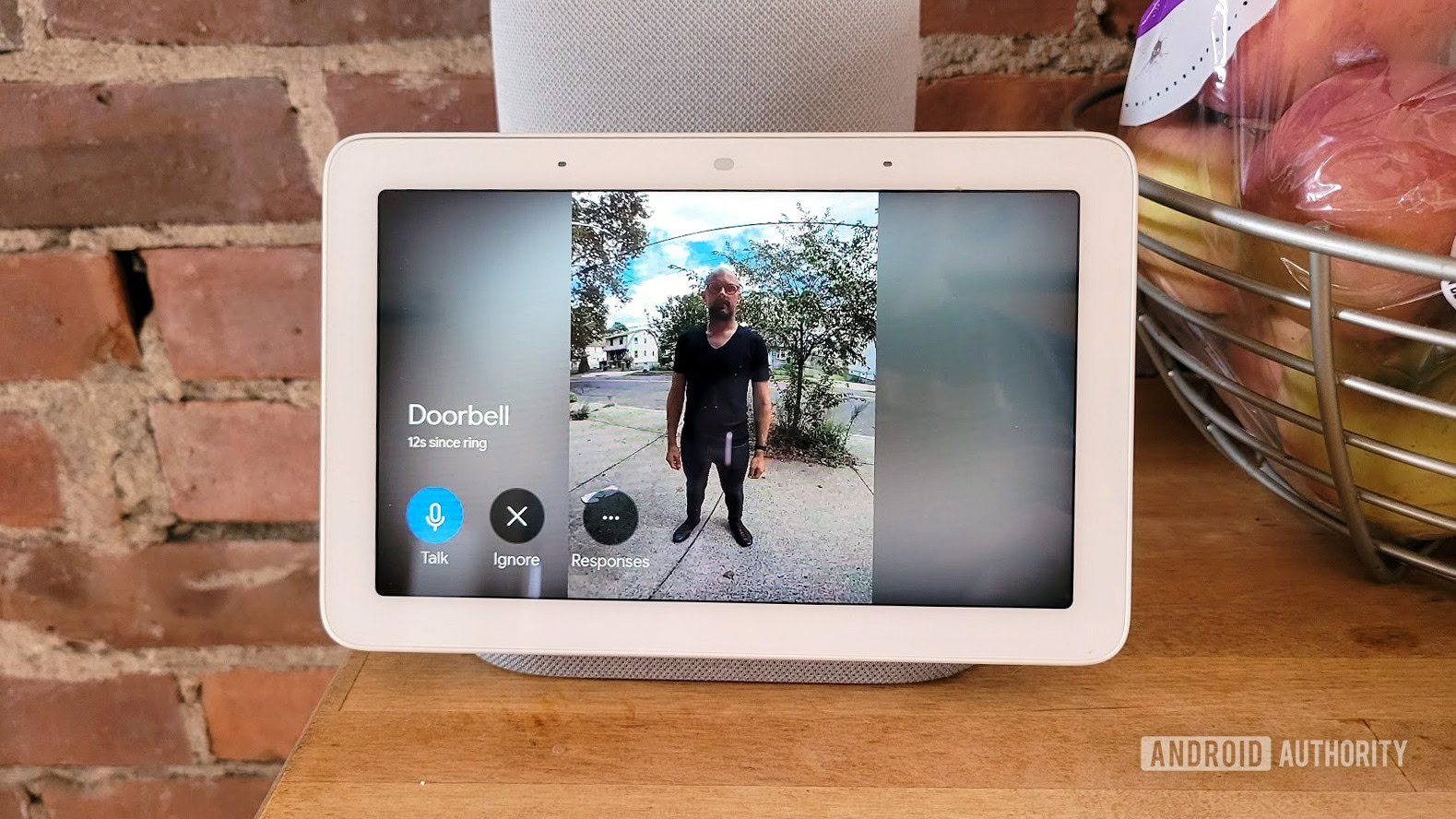
Google downplays this by focusing on the HDR capabilities of the camera, a feature not too many competitors offer. HDR helps with better contrast and definition between shadows and highlights. This does help a lot with making video look good, but HDR combined with a sharp resolution would make it look even better.
Of course, it’s not like you’ll be using this for a photo shoot. For what it is, the video quality of the Nest Doorbell is good enough to get the job done, just not a new gold standard for the market.
AI-based alerts
Google is a software company first, so it shouldn’t be surprising to hear that the software aspects of this device are the big selling points. The camera can recognize people, packages, animals, and vehicles all separately.
This allows you to be notified not only that there’s a person at the door, but that they left a package behind. It also means you can program the doorbell to notify you if a car goes by but not if an animal does.
Google's object recognition works pretty much flawlessly.
I found the AI to be incredibly accurate. It recognized people, packages, and vehicles pretty much flawlessly. It even recognized a bag of food left at my door as a package, even though it obviously wasn’t shaped like a box.
This is all possible thanks to on-device machine learning capabilities. The Nest Doorbell doesn’t need to ping Google’s servers for basic determination of what’s going on, which makes it more efficient at identifying things.
IP rating and internet outages
Since most people will install the device outside, it has an IP54 rating. This means it can prevent dust and other particle ingresses from affecting operation. It can also withstand significant water splashing, i.e. rain. The device survived tropical storm Henri when it hit my home of New Haven, CT, last year, so it’s pretty durable.
Finally, if your internet goes out, the device can save up to 1 hour of footage via its onboard storage. When internet connectivity resumes, it uploads that footage to the cloud. See further down for more information on cloud saves and other connected features.
Can you install the Nest Doorbell yourself?
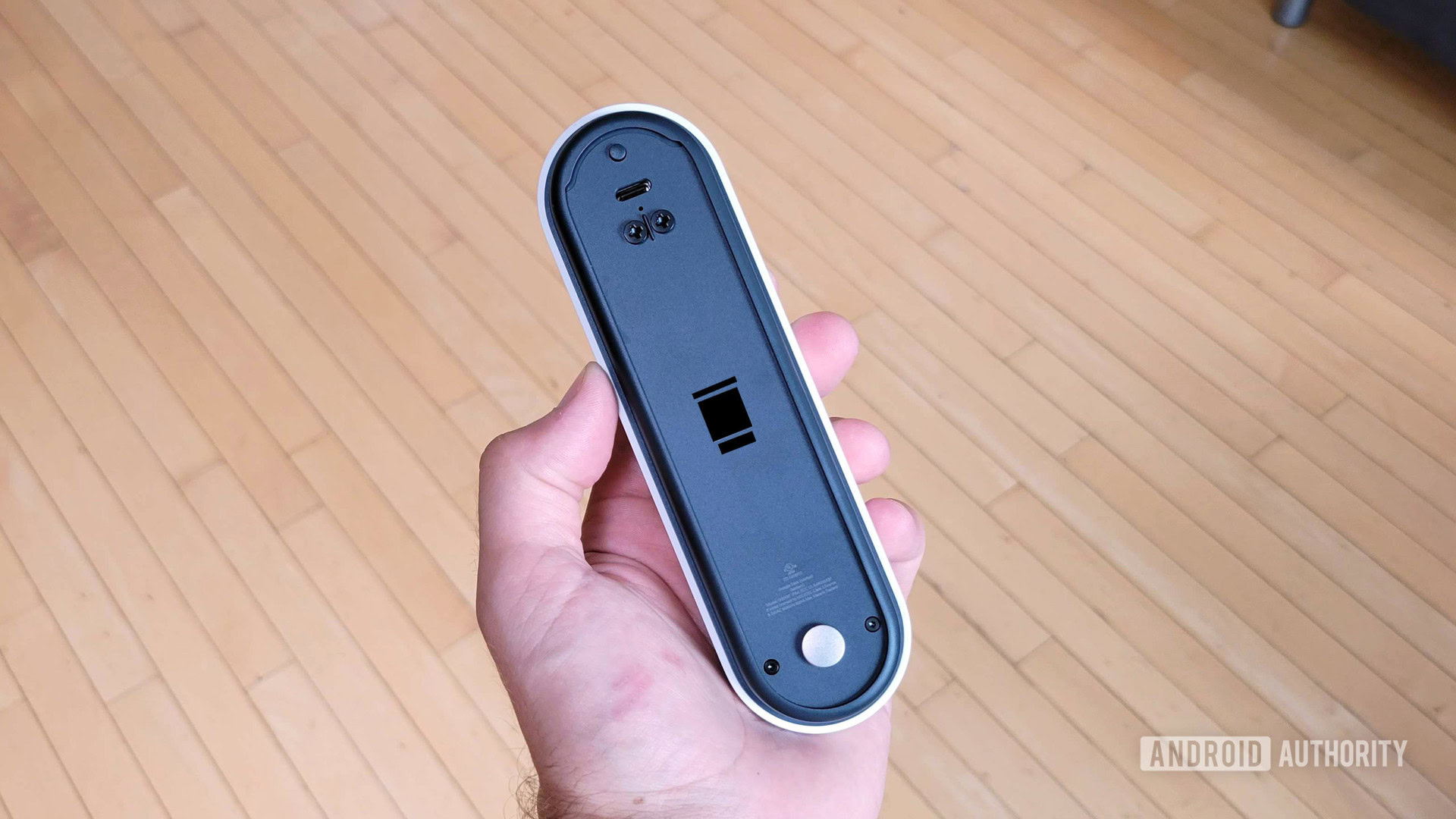
If you choose to go wireless, installing the Nest Doorbell is simple enough that anyone can do it. If you want to make sure you can handle it, Google has a helpful tutorial on the full process.
For this review, I installed the device at my front door in about 15 minutes. All it took was a drill, a drill bit, and some measuring tape. In a pinch, I probably could have done it all with just a screwdriver, though if you have thicker walls you may need a drill to create pilot holes for screwing in the mount.
Outside of those tools, everything you need to install the Nest Doorbell is in its retail box. That includes the mount, a tool to detach it from the mount, and an optional wedge plate that can angle the camera slightly to the left or right to gain maximum coverage of your entryway. You’ll also need a Google account and the Google Home app on your Android or iOS device.
Installing the Nest Doorbell wirelessly took me about 15 minutes using everyday tools.
If you want to see if your front door is a good fit for the Nest Doorbell, grab a measuring tape. You’ll need about 2 inches of width and about 8 inches of height for the installation. You’ll also want the center of the device to be about 4 feet from the floor, as this is the ideal position to see both faces and packages left on the ground.
Once installed, it holds fast. The device won’t budge if you just try to yank it off. Do note, though, that the supplied removal tool is not intricate in any way. If a thief knew what to do, a flathead screwdriver would do the trick. As such, while theft isn’t dead simple, it also isn’t difficult. Keep this in mind if you live in a risky neighborhood. Thankfully, Google does offer theft replacement, assuming you get a police report and follow the proper procedures.
As a final note, installing the Nest Doorbell wired to your existing chime system doesn’t appear to be too difficult. I didn’t do that for this review however, so I can’t say whether or not a professional installation would be advised.
How is the Google Nest Doorbell’s battery life?
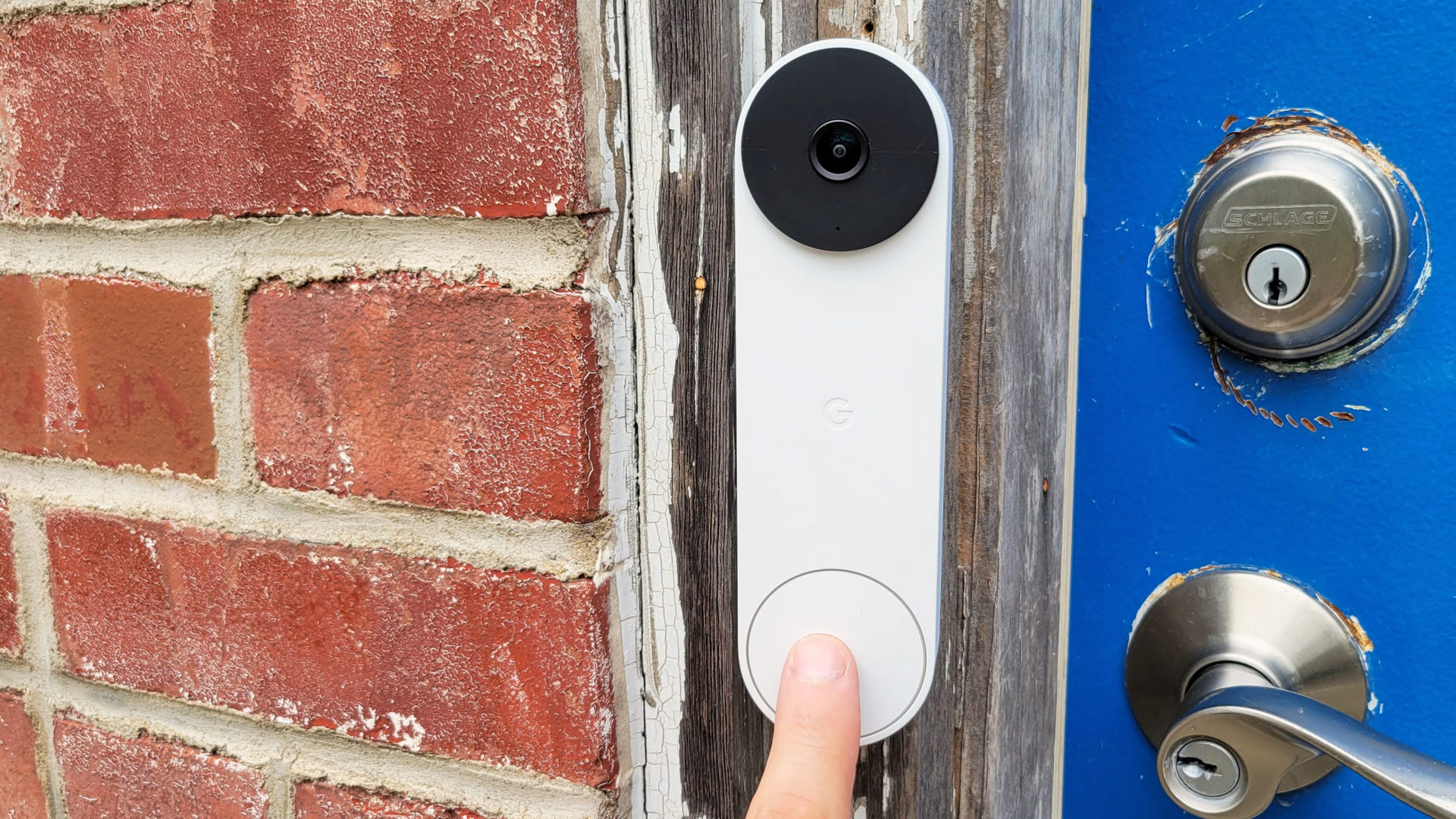
I installed the fully-charged Nest Doorbell on a Thursday afternoon. By the following Monday afternoon, its battery was at 73%. Extrapolating those results, I should expect about 7% battery loss each day for a total period of about two weeks before needing to charge.
Keep in mind that your results may vary significantly from mine. For example, if your front door area is busier, you’ll see reduced battery life. You’ll see further reductions if you increase wake-up sensitivity and overall video recording/streaming quality.
Conversely, if your front door is much less active and you reduce those settings, you could see significantly improved battery life. It’s not out of the realm of possibility that low-traffic households could see over a month of battery life.
If you already own a smart doorbell, it is very likely you’ll see similar results with the Nest Doorbell as you do with your current device. The 6,000mAh battery inside this product is comparable to most competitors (the Ring Video Doorbell 4 has a similar capacity, for example). This combined with the controls you have for video quality, wake sensitivity, etc., should keep things fairly consistent.
If you don’t already own a wireless doorbell, it’s very difficult to judge how long this one will last you. Doorbells are like smartphones — if you have your phone’s screen brightness way up and use GPS navigation constantly, you’re going to see pretty weak battery life compared to someone more conservative.
Regardless of how long a Nest Doorbell lasts, it takes about 5 hours to charge its battery using the in-box USB-C cable (there is no wall adapter included). Its maximum charging speed is 7.5W, so you’ll want to use a charger that meets or exceeds that speed, if possible. If you’re ever curious about how long you’ve got left for battery power, the Google Home app gives you that info. It will also notify you as you get close to zero.
The battery in the device is non-removable, so you’ll need to physically remove the doorbell from your front door to charge it. This is not ideal for obvious reasons, and other products (such as the aforementioned Ring Video Doorbell 4) offer swappable batteries. This is likely a case in which Google put form over function with its design.
Keep in mind that if you install this wired to your home, you don’t need to worry about charging it. The device will draw power from your chime system. In the event of a power outage, it should operate on battery until power returns. As such, if you don’t want to be bothered with charging the Nest Doorbell, wired is the way to go. Just make sure your chime system fits the proper requirements.
Do you need a Nest Aware subscription to use the Google Nest Doorbell?
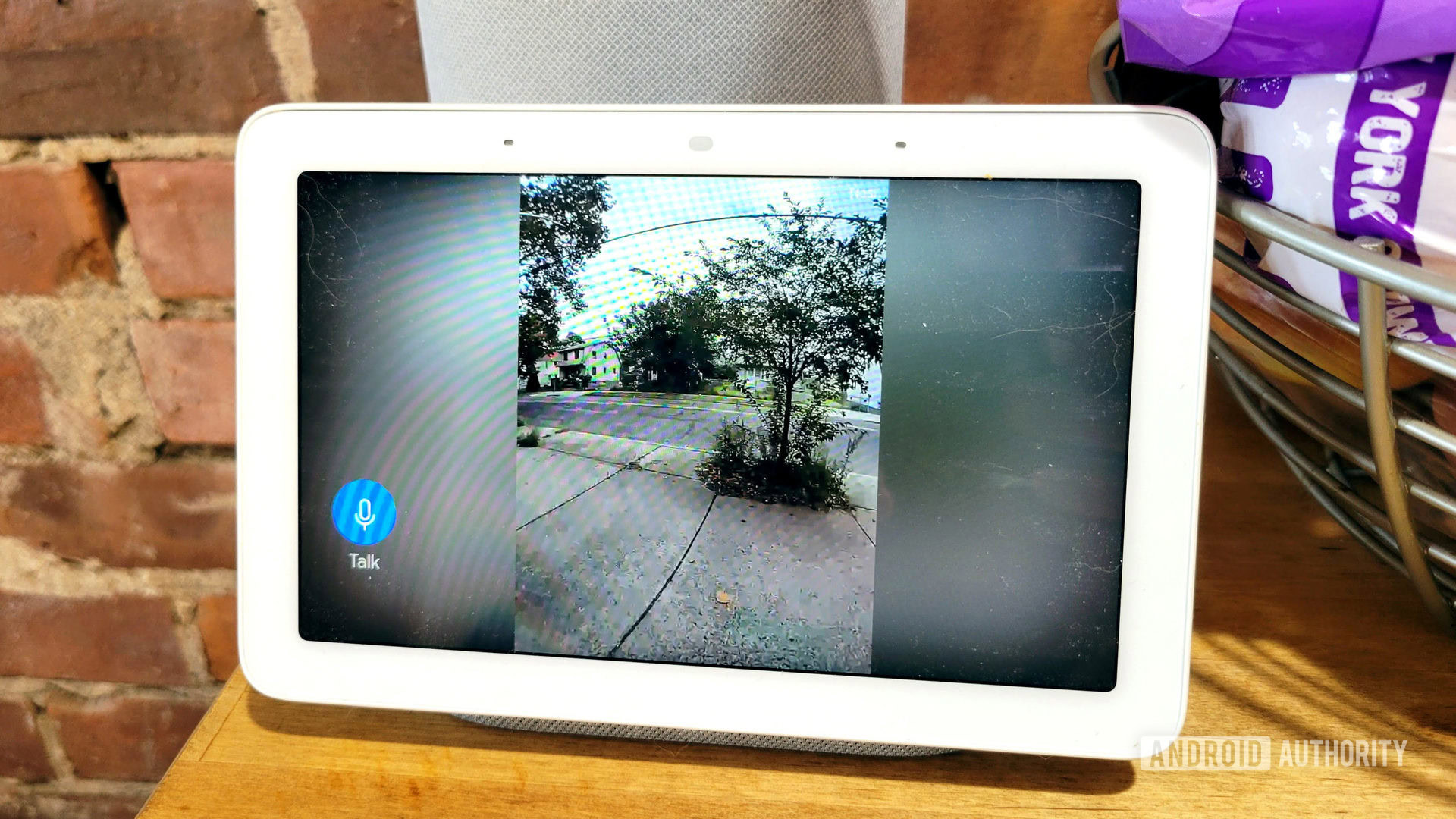
Without a Nest Aware subscription, here’s what the Nest Doorbell can do:
- Alert you when it sees a person, animal, or vehicle.
- Alert you that someone has pressed the doorbell.
- Allow you to communicate with the person at the door through either your phone or smart display.
- Tell you that someone has left a package.
- Save 1 hour of onboard footage.
- Save 3 hours of cloud footage.
For most folks reading this, that should be all you need to get what you pay for from the hardware. However, an Aware or Aware Plus subscription does offer some perks.
A Nest Aware subscription ($6 each month or $60 each year) ups your saved cloud footage significantly from 3 hours to 30 days. It also offers a feature called Familiar Face detection. This uses your Google Photos and Google Contacts data to tell you who’s at the door using facial recognition.
Unless you need tons of cloud event recording time, you probably don't need to bother with Nest Aware.
Aware Plus ($12 each month or $120 each year) expands coverage to a full 60 days of event recording. You also get 24/7 continuous recording over 10 days, though only for supported cameras, which doesn’t include this one.
As cool as it is to have Assistant say “Tom is at the door,” it’s probably not worth paying a monthly fee for it. As such, unless you need tons of cloud event recording time, you probably don’t need to bother with Nest Aware.
Anything else?
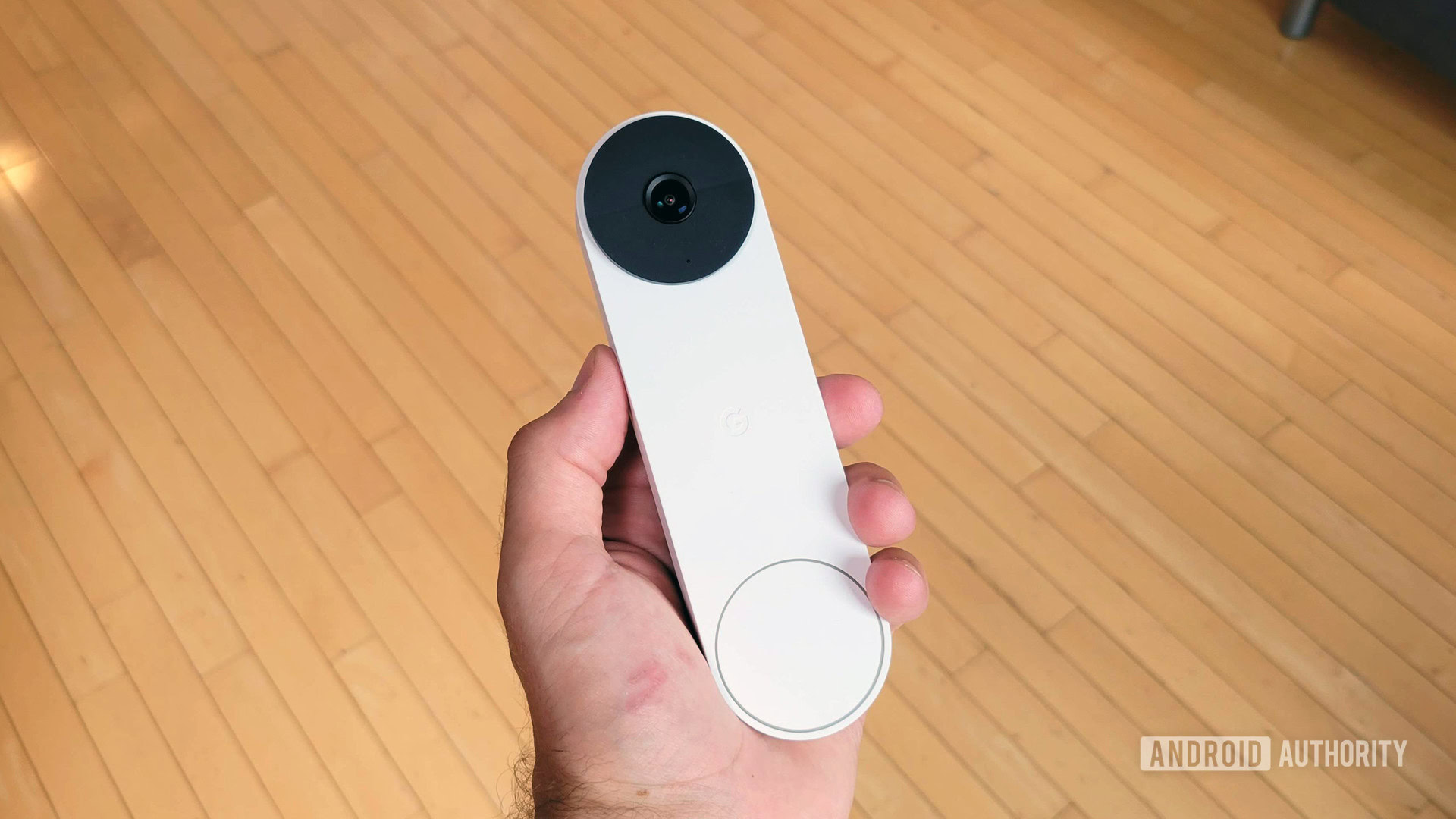
- No Nest app: Google is moving away from the Nest app. All features of the Nest Doorbell, including setup, are exclusively accessible through the Google Home app.
- Wi-Fi only: Although you can deliver wired power to the Nest Doorbell, you cannot deliver wired internet. As such, you’ll need a decent Wi-Fi signal (2.4GHz or 5GHz) at your front door for this to work well.
- Night vision: The Nest Doorbell will switch automatically to night vision mode when appropriate. You can turn this off or leave night vision on permanently in the Google Home app.
- Video feeds are not constant: Since most people will install this wirelessly, it’s important to note that it will not have a constant video feed. In other words, if you are hoping to have your doorbell camera streaming to a smart display 24/7, this won’t work for you. If there are no events happening and you haven’t manually activated the camera, the feed will be off. Even when you first open the Google Home app, you’ll see a blank screen for the camera until you manually turn it on or an event occurs.
- Quiet Time: Google’s Quiet Time feature allows you to shut off notifications and audible chimes from the doorbell for a short period of time. This is helpful if you are taking a nap at home and don’t want to be disturbed. You can set Quiet Time for 30 minutes, 1 hour, 90 minutes, 2 hours, or 3 hours.
- Privacy and video history: It is incredibly easy to get rid of any video history the doorbell records. In the Google Home app, there’s an easy-to-find red button that says “Delete video history.” A tap of that and then a confirmation tap deletes everything you have saved. Remember, too, that the AI detection smarts happen on-device, making this a relatively secure and private camera.
Value and competition
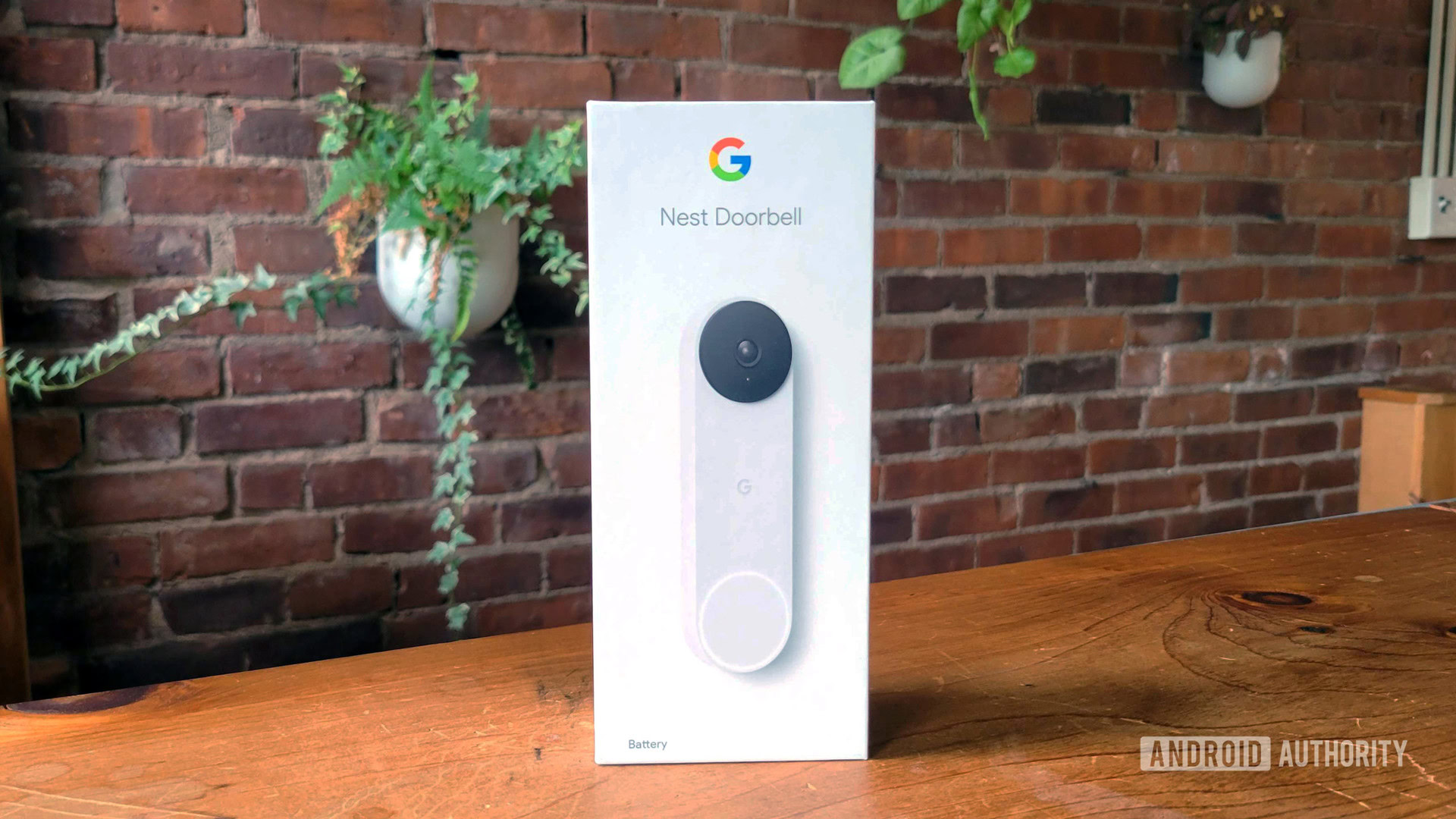
At $179, the Google Nest Doorbell is not cheap. If you’re looking for a basic smart doorbell experience, there are plenty of competing products out there that will cost you less cash. Those competitors will also outdo the Nest Doorbell in its weakest area, which is camera resolution.
The Ring Video Doorbell starts at just $99 and offers 1080p resolution. Like the Nest Doorbell, it’s wireless, comes in multiple colors, notifies you on your phone when someone’s at the door, and can be installed by anyone in minutes. Since it’s an Amazon product, it integrates well with the Alexa voice assistant, which can do many of the same things as Google Assistant. You can get Ring chimes on Assistant speakers and displays.
Check out: The best video doorbells
If you want something with an even higher resolution, the wireless Eufy Security Video Doorbell offers a 2K experience for $199. It even comes with a free wireless chime system for an audible household chime, and works great without any monthly subscription.
The wireless Ring Video Doorbell 4 is technically more expensive than the Nest Doorbell at $219 but does offer quite a few advantages. It has a 1080p resolution, swappable batteries, theft protection, and noise-cancelling audio. However, it does not have free cloud recording, and its AI detection features aren’t as advanced.
What the Nest Doorbell offers that competitors don’t is deep integration with Google Assistant and extra AI smarts. If you want a wireless doorbell that will automatically show who’s at the door on your Google Nest Hub, this is guaranteed to work. Likewise, if you want Google’s Familiar Face detection and accurate notifications for things like packages, the Nest Doorbell may be a must-buy.
Google Nest Doorbell review: The verdict

During my time with the Nest Doorbell, I was impressed with it. It nails all the basics one needs from a smart doorbell. It also offers a few perks for people who are already invested in a Google-powered smart home, such as smart speaker chimes and smart display feeds. Its 3 free hours of event recording history is a nice perk that many competitors don’t offer, and if that’s not enough, you’ll only pay $6 per month for plenty of additional space. Battery life right now isn’t impressive, but I’m confident that most people will get better results than me due to how active the front of my house is.
The problem Google faces with this product is how many customers might not be in the market for it anymore. Google’s given its competitors years to convert buyers to other platforms, with Amazon’s Ring being the big winner. If you’ve already got a wireless Ring doorbell, for example, you probably won’t find many reasons to switch over to this.
The Google Nest Doorbell is now the best option for Google fans who haven't already committed elsewhere.
Even ignoring that, this device is actually weaker in a lot of ways compared to the original Nest Hello. The fact that it offers a wireless configuration and on-device AI detection puts it ahead of that earlier product, sure. However, people who own the older doorbell won’t find much in the new one that would justify an upgrade, outside of Familiar Face detection and the ability to chime on smart speakers.
The bottom line here is that Google created a great product that might be years too late to the party. If you’re just getting into setting up a Google smart home, the Nest Doorbell is one of the best options — if not the best. Everyone else who’s already got a smart doorbell of some kind probably won’t find much here to sway them towards upgrading, especially for $179.
Google Nest Doorbell top questions and answers
The Nest Doorbell will alert you when someone has pressed the doorbell or when it sees a person, animal, or vehicle. It can also tell you that someone has left a package and allows you to communicate with the person at the door.
Basic features like getting an alert when someone is at the door and talking to them are free. However, Google does offer a subscription called Nest Aware that provides additional services like facial recognition and extended recording history.
The Nest Doorbell doesn’t need a chime as it can play on smart speakers and displays, and at the very least, you’ll get a notification on your phone via the Google Home app. You can wire it to your existing doorbell chime system if you’d like, which makes the product quite versatile.
Yes, the Nest Doorbell can be stolen as it is detachable. Thankfully, Google offers replacements in some regions through its theft protection scheme.
Based on our testing, the Google Nest Doorbell’s battery is good for around 2 weeks of use, although your mileage may well be better.
Yes, you can talk to the person that rang your Nest Doorbell through either your phone or smart display. They’ll be able to hear you, but they won’t see you.
Thank you for being part of our community. Read our Comment Policy before posting.